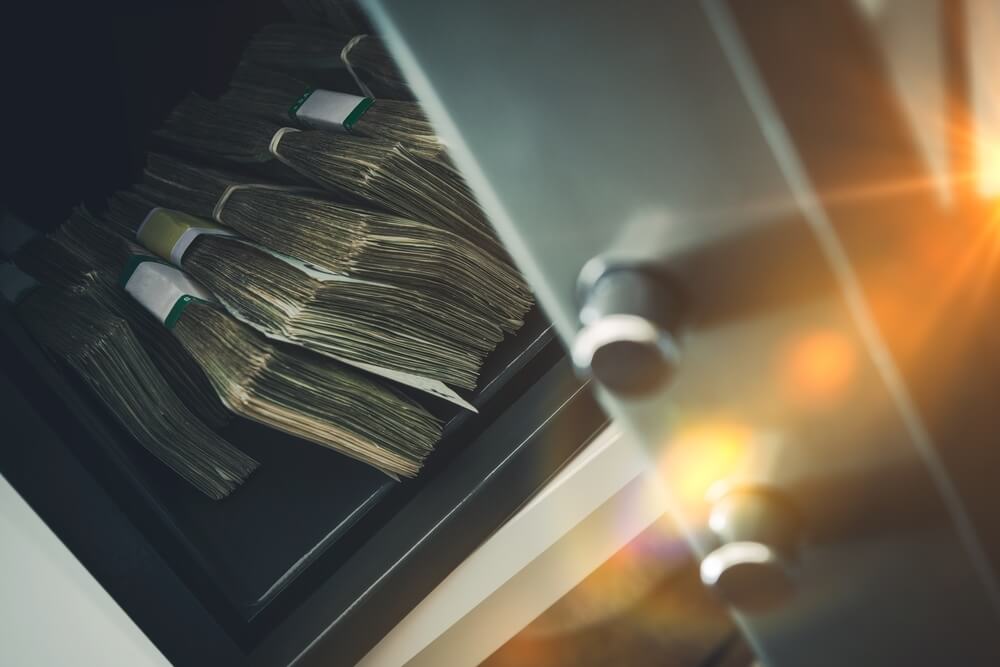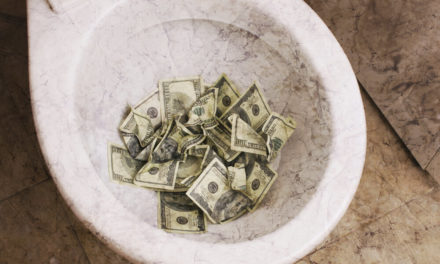It wasn’t easy to get rich…
It took me years of perseverance and hard work that few people are willing to dedicate themselves to.
But when I finally achieved my dream of financial independence, I realized the hard work was just getting started…
If you’re like most people, you probably have the wrong idea about wealth.
Even if you have a lot of money, you’re still focused on getting rich.
But you have to get rich only once.
After, your goal should be to stay rich. Meaning you have to protect your wealth.
Rich means different things to different people.
But no matter what your level of wealth, it’s vital you guard your assets… and not swing for the fences on every pitch.
That’s why I developed a simple wealth protection strategy. It makes sure I stay rich… no matter how the market behaves.
And today, I’ll share it with you…
Picture Yourself on a Bridge
Picture yourself carrying five buckets of water across a narrow bridge.
If any of the buckets get too heavy, you’ll lose your balance, tip over, and fall off. You need to make sure all five buckets are balanced so you can get across safely.
Each bucket represents an “asset class” (group of similar investments) that makes up your portfolio. If you want to continue to have financial independence… and avoid falling off the bridge… you have to get the right balance.
The result is more stable wealth… without having to give up your quest for outsized profits. I like investing this way because I no longer worry about trying to maximize my profit on every trade… or every time the market changes course.
Now, it’s up to you to determine what you put in your buckets. But these are what my five buckets would look like today:
- Gold
- Long-term stocks
- Real estate
- Cash
- Speculations
Let’s go through them… and why they’re the best way to grow… and protect… your wealth today.
Wealth Bucket No. 1 — Gold
Gold is cyclical. It tends to get hot and go on a run. The run usually lasts several years and includes a few soft patches… which is when savvy investors get in.
There’s also a downside to the cycle. That’s where we’ve been for about seven years. But now, we’ve officially entered an upswing in the cycle.
When gold is cheap, I pour money into it. And it’s the cheapest of the five buckets right now.
I don’t view gold as an investment. It’s a way to protect your savings. It’s survived every financial crisis, and it will continue to do so.
I don’t think about this bucket often. I just get the gold, vault it, and move on.
Wealth Bucket No. 2 — Long-Term Stocks
One bucket is for stocks I plan to hold for the long haul. I typically own between six and eight stocks at any given time.
I don’t trade these stocks often. I’m a seller only if something happens that changes the business landscape for one of the companies.
This bucket is for real businesses… not hot-potato trades.
These aren’t the most exciting investments in the world. But over time, there’s huge value in owning stakes in rock-solid American businesses.
You end up with companies that slowly capture market share from their competitors, invest money back into their businesses and pay dividends.
I don’t see how you can get hurt having this bucket represent 20% of your wealth.
Wealth Bucket No. 3 — Real Estate
Another one of my buckets is real estate. But it’s important to note that this bucket — like the others — should change along with market conditions and where you are in your life.
I put most of my money into a real estate bucket in 2009 and 2010. The U.S. housing market had just crashed. If you had the money, you could buy houses for next to nothing.
That’s exactly what I did…
I bought six single-family homes. I bought one of them for just $10 per square foot. I spent another $10 per square foot fixing the place up. So I put in about $20 per square foot altogether.
The guy before me paid $160 per square foot… and ended up in foreclosure because he bought near the peak of the housing bubble.
Today, I’m not adding to my real estate bucket. There just aren’t great deals out there. This is key to how I invest. Rather than fight the market, I let it determine how I allocate my money.
It’s a mistake to look at your home as an investment. If you buy a shack, and you plan to live in it while you remodel it, until you sell it, that’s an investment.
Otherwise, you’re buying shelter. And that’s not something to speculate on.
Wealth Bucket No. 4 — Cash
Cash should also be one of your buckets.
You want to sit on plenty of cash. This way, when an opportunity shows up, you’re ready… and able… to invest.
When assets go on sale in a crash, most people don’t have the cash to take advantage.
They watch once-in-a-lifetime buying opportunities come and go… only to say they wish they had the money.
The exact amount of cash you choose to hold is up to you. If I’m 25% in cash, that’s pretty good.
In the 2008 market crash, you didn’t need to be 100% in cash to take advantage. I had stocks that went down a lot. But I had some cash to take advantage of other opportunities, such as the real estate deal I mentioned.
Wealth Bucket No. 5 — Speculations
Speculations should be one of your buckets… but this bucket should be only a small percentage of your wealth.
This protects your downside risk. And you need only a small grubstake to make a small fortune in the right kind of speculation.
The key is separating good speculations from bad ones.
As a professional investor, a lot of opportunities come across my desk. Most of them aren’t worth my time. You have to pass on a lot of bad speculations before you find a great one.
Regards,
E.B. Tucker
Editor, Strategic Trader
• This article was originally published by Bonner & Partners. You can learn more about Bill and Bill Bonner’s Diary right here.




